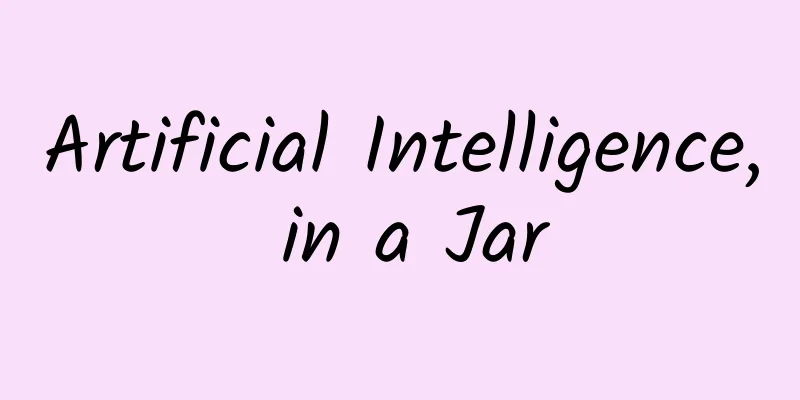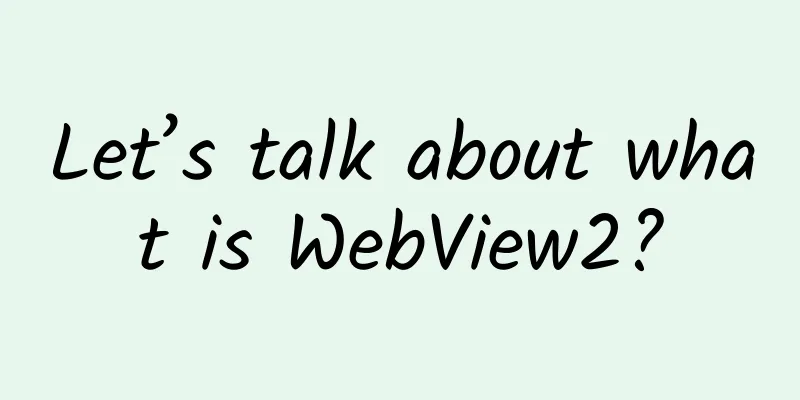Artificial Intelligence, in a Jar

|
By Rich Heimann The "brain in a jar" is a thought experiment of a disembodied human brain living in a jar of food. This thought experiment explores human concepts of reality, mind, and consciousness. This article will explore a metaphysical argument against artificial intelligence (AI) on the grounds that a disembodied AI, or a "brain" without a body, is incompatible with the nature of intelligence. The "brain in a jar" is a different inquiry from the traditional question of artificial intelligence, which requires thinking about whether thinking requires a thinker. The possibility of artificial intelligence depends mainly on what is needed to make a computer (or computer program) intelligent. From this perspective, if we can understand intelligence and figure out how to program it into a computer, then (true) artificial intelligence is achievable. René Descartes, a 17th-century French philosopher, was criticized for his "brain in a jar." Materialism holds that the world and everything in it is made of matter, but Descartes at the time was against materialism, separating the mind from the body and exploring non-material things such as consciousness, the soul, and even God. This philosophy of mind is mind-body dualism. Figure | French philosopher René Descartes Dualism holds that body and mind are not identical, but separate and opposing sides composed of different substances that interact with each other. Descartes' methodology is questionable. He doubts everything, even his own body, to support his own ideas. He tries to find the "undoubted" things that he is least likely to doubt. The result is an exhausting epistemological quest to understand what we can know and what exists by manipulating metaphysics. This solipsistic thinking is unfounded, but it would not have been considered a personality disorder in the 17th century. We have reason to sympathize with Descartes. Thinking about thinking has been a problem for thinkers since the Enlightenment, and has produced strange philosophies, theories, paradoxes, and superstitions. In many ways, dualism is no exception. It wasn’t until the early 20th century that dualism was challenged in a big way. Behaviorism was the idea that mental states could be reduced to physical states, which were behaviors. Aside from the reductionism that came from viewing humans as behaviors, the problem with behaviorism was that it ignored psychological phenomena and explained brain activity as producing a series of behaviors that could only be observed. Concepts like thoughts, intelligence, emotions, beliefs, desires, and even genetics were replaced by environmental stimuli and behavioral responses. Therefore, we can never explain psychological phenomena using behaviorism because its focus is on external, observable behavior. Philosophers love to joke about two behaviorists acting out after sex: "Good for you, how about for me?" one says to the other. By focusing on observable physical behavior rather than the origins of behavior in the brain, behaviorism becomes irrelevant to the sources of intellectual knowledge. This is why behaviorists cannot define intelligence. They think it is nothing. Take Alan Turing's Turing test. Turing evaded the definition of intelligence and said intelligence is as intelligence does. If a jar can trick another jar into believing it is behaving intelligently by giving it seemingly intelligent answers, then the jar passes the Turing test. Turing was a behaviorist. Figure | Computer scientist Alan Turing Behaviorism became less influential as an explanation of intelligence. By the 1950s, behaviorism was no longer admired by most people. The most significant attack was made by the American linguist Noam Chomsky in 1959. Chomsky severely criticized B.F. Skinner's book Verbal Behavior. The review of Skinner's Verbal Behavior is Chomsky's most frequently cited work and, despite its bland title, is more widely known than Skinner's original book. Chomsky initiated a reorientation of psychology toward the brain, known as the cognitive revolution, which resulted in modern cognitive science. As a result, functionalism became the new dominant theory of thought. Functionalism views intelligence (i.e., psychological phenomena) as the functional organization of the brain, in which individual functions (such as language and vision) are understood through their causal effects. Unlike behaviorism, functionalism is concerned with what the brain does and where brain functions. However, functionalism is not interested in how something works or if it is made of the same stuff. It does not care if the thinking thing is a brain or if the brain has a body. If it functionally exhibits intelligence, it is like classifying anything that tells time as a clock, and it does not matter what the clock is made of, as long as it tells time. Figure|American psychologist B.F. Skinner In Psychological Predicates, American philosopher and computer scientist Hilary Putnam combined functionalism with computational concepts and proposed computational functionalism. In short, computationalism holds that the mental world is based on a physical system (i.e., a computer) that uses concepts such as information, computation (thinking), memory (storage), and feedback. Today, research on artificial intelligence relies heavily on computational functionalism, in which intelligence is organized by functions such as computer vision and natural language processing and explained in computational terms. Unfortunately, functions do not reflect thinking, but are just aspects of thought. Besides the reductionism that comes from viewing the mind as a collection of functions (and humans as brains), the problem with functionalism is that it ignores thinking. While the brain has local functions that can be represented as input-output pairs of physical systems inside a computer (such as perception), the mind is not a loose collection of local functions. John Searle is a philosopher and former UC Berkeley professor whose "Chinese Room" thought experiment is one of the strongest attacks on computational functionalism. In his view, it is impossible to build an intelligent computer because intelligence is a biological phenomenon that presupposes a conscious thinker. This argument is the opposite of functionalism, which holds that intelligence is achievable if there is anything that can mimic the causal interaction of specific mental states with computational processes. Image: American philosopher John Searle Ironically, in a “brain in a jar,” Descartes would not have considered an AI mind at all. Descartes was familiar with 17th century vending machines and mechanical toys. However, the “I” in Descartes’ maxim “I think, therefore I am” conceives of human thinking as non-mechanical and non-computational. The “I think” argument implies that for thinking to occur, there must be a thinking subject. While dualism would seem to allow for the existence of a brain in a jar by excluding the body, it would also contradict the claim that AI can think, since any thinking lacks a thinking subject, and any intelligence lacks an intelligent subject. Hubert Dreyfus explains how AI has inherited a "lemon" philosophy. Dreyfus is a professor of philosophy at the University of California, Berkeley, and is deeply influenced by phenomenology, a philosophy about conscious experience. Dreyfus explains that, ironically, philosophers have objected to many of the philosophical frameworks used at the dawn of AI, including behaviorism, functionalism, and representationalism, which all ignore embodiment. These frameworks are contradictory and incompatible with biological brains and natural intelligence. Figure|American philosopher Hubert Dreyfus To be sure, AI was born at a strange philosophical moment. This largely hampered people’s understanding of intelligence and what it meant at the time. Of course, the field’s achievements over the past 70 years also show that the discipline is not doomed to fail. The reason is that the philosophy most commonly adopted by practitioners in the field of AI is pragmatism. Pragmatism is not a philosophy of mind, but rather a philosophy focused on practical solutions to problems such as computer vision and natural language processing. This field finds shortcuts to problems that we misinterpret as intelligence, primarily due to our tendency to project human qualities onto inanimate objects. The inability of AI to understand and ultimately solve intelligence suggests that metaphysics may be necessary for the hypothetical fate of AI. However, pragmatism suggests that metaphysics is unnecessary for solving real-world problems. This strange problem suggests that true AI cannot be real unless “the brain in a jar also has legs,” which spells doom for some AI repositories on GitHub, and for all AI businesses. Because beyond the metaphysical nature of things, we’re left with a deep and potentially unanswerable ethical question: How can you not say that you gave your computer a power cord and a mouse because either an intelligent entity or animal experiment requires arms and legs? About the Author Rich Heimann is the Chief AI Officer at Cybraics and the author of Doing AI, a book that explores what AI is, what it isn’t, what people want AI to be, what solutions you need, and how to solve problems. Original link: https://bdtechtalks.com/2022/04/08/ai-brain-in-jar/ Academic headlines |
>>: World Quantum Day | Why is it so elusive to scientists? Unveiling the mystery of quantum
Recommend
Ledgers, Hounds, and Boars
Wang Youqin lost confidence in farming after thre...
A high-speed railway with a speed of 400 kilometers per hour is not the ultimate goal. Our country has a wilder "close-to-the-ground flying" plan!
During the May Day holiday, the tourist army once...
Does musk really cause miscarriage or infertility? The truth made the queen cry in the toilet...
...
Baidu search promotion ocpc daily optimization guide
When Baidu ocpc was first promoted in 2018, not m...
What the hell, can I get a passport and take a plane in the UAE?
If you haven't been paying attention to the 2...
Have you paid attention to these "bullshit" things?
Whether at home, in the elevator, on the subway, ...
Ten Lectures on Event Planning and Promotion
Event planning is an important part of marketing ...
Weibo advertising creative optimization skills, placement and traffic generation
I believe most advertisers are very familiar with...
QQ Simple Edition, Tencent TIM PC Edition 3.3.5 beta version download: Netdisk supports backup of chat records
IT Home reported on February 7 that recently, Ten...
Online customer acquisition skills, share these 3 steps!
Before I start, I would like to ask you if you ha...
The Internet Architect 5.0 course of Kegongchang will help you transform from a novice to a senior development engineer
The Internet Architect 5.0 course of Kegongchang ...
Shenma Search Launches Blue-ray Mode, Playing the Three Kingdoms Game in the Mobile Search Market
Recently, Google search director Amit Singhal rev...
Understanding of the concept of seo, how to understand seo?
Understanding of the concept of seo, how to under...
Long March 5B rocket: The unique skills of the "big guy"
At 14:22 on July 24, the Long March 5B carrier ro...
Understand the latest developments in AI in one article! A guide for workers →
In March 2023, AI technology represented by GPT-4...









